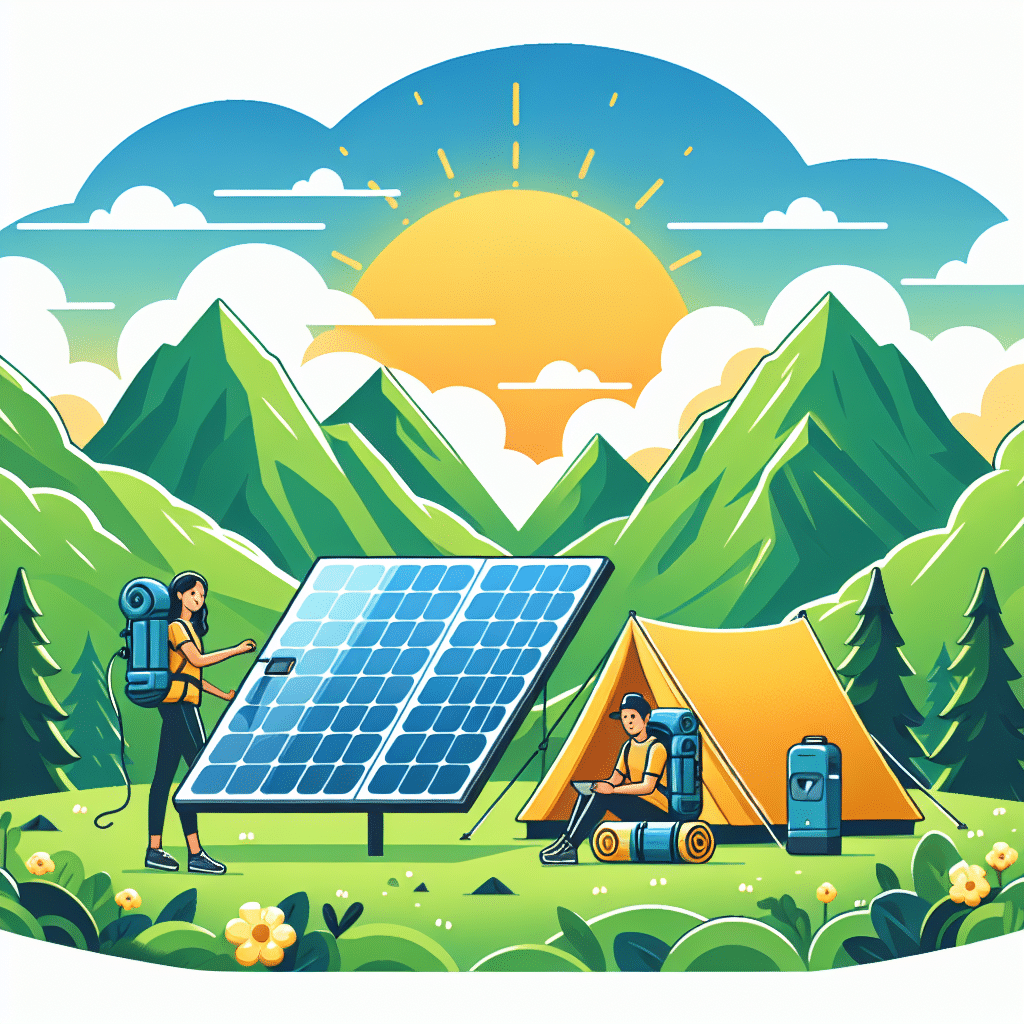Solar Power Tips for Backpackers
Understanding Solar Power for Backpacking
Backpacking in remote locations often means being away from conventional power sources. Solar power offers an eco-friendly solution to keep your devices charged and your adventures powered. Understanding its principles is key: solar panels convert sunlight into electricity, which can be stored in batteries for later use. As a backpacker, adopting solar power can enhance your journey while minimizing environmental impact.
Selecting the Right Solar Gear
-
Portable Solar Panels: Choose lightweight and compact models. Look for foldable solar panels that can easily fit in your backpack. Aim for panels with at least 20 watts to efficiently charge multiple devices.
-
Solar Power Banks: These are essential for storing energy. Opt for power banks specifically designed to be charged via solar panels. They should have high capacities—20000 mAh or more—to keep your devices charged over multiple days.
-
Solar Charging Kits: Comprehensive kits often include both panels and connectors for various devices. Choose kits with multiple output ports (USB, 12V) to facilitate charging for phones, tablets, GPS devices, and even small cameras.
-
Durability: Ensure your solar gear is rugged and weather-resistant. Look for products designed to withstand outdoor conditions, as backpacking exposes your equipment to dust, moisture, and rough handling.
Optimizing Solar Charging Efficiency
-
Positioning: Always position your solar panels towards the sun to maximize exposure. A panel angled at 45 degrees typically provides the best output. Avoid shading from trees or objects during the day.
-
Timing: The sun’s position changes throughout the day. Early morning and late afternoon, the sunlight is less intense, so plan to charge your devices during mid-day when the sun is at its peak.
-
Weather Awareness: Cloudy or rainy conditions can significantly reduce solar charging efficiency. Monitor the weather and adjust your charging schedule accordingly. Have backup charging options, like power banks, for such days.
-
Clean Panels: Dust and debris can obstruct sunlight. Regularly clean your solar panels with a damp cloth to optimize efficiency during your trip.
Managing Power Consumption
-
Prioritize Devices: Understand which devices you need the most and prioritize their charging. Smartphones, GPS devices, and cameras are often essential; consider leaving behind less critical gadgets.
-
Airplane Mode: Activate airplane mode on your devices when not in use to save battery life. This significantly reduces energy consumption and helps preserve power for actual usage.
-
Power Saving Settings: Utilize power-saving options on your devices. Lower screen brightness, turn off Bluetooth, and close unused applications to conserve battery life.
-
Usage Time: Limit device usage and rely on battery-powered gear as much as possible. For example, utilize traditional maps and compasses instead of GPS when feasible.
Choosing the Right Campsite
-
Sun Exposure: When selecting a campsite, prioritize areas with adequate sun exposure throughout the day. Avoid heavily shaded spots, and consider altitude; higher elevations often receive more sunlight.
-
Ground Stability: Make sure the ground is stable enough to support your solar gear. Setting up panels on uneven surfaces can lead to inefficient energy capture.
-
Safe Storage: Protect your solar panels from potential damage when not in use. Ensure they are stored securely and avoid leaving them unattended in busy areas.
Advanced Solar Setups
-
Tripod Mounting: For flexible positioning, consider using a tripod or adjustable mount for your solar panels. This allows you to easily change angles without moving your gear.
-
Multiple Panels: If you anticipate high power demand, consider using daisy-chained multiple solar panels. This setup can substantially reduce charging time if you have an extensive range of devices.
-
Solar Air Conditioners or Fans: In hotter climates, smaller solar-powered cooling systems can enhance comfort. These run efficiently from small solar setups, perfect for warm-weather backpacking.
Safety and Maintenance
-
Water Safety: Keep solar panels dry, especially during storms. Water damage can significantly reduce their efficiency. Always ensure that your panels are stored in a waterproof bag while hiking.
-
Battery Maintenance: Store power banks and batteries in a cool, dry place. Avoid exposing them to extreme temperatures or direct sunlight when not in use, as this can affect their lifespan.
-
RV and Larger Sets: If backpacking with an RV or larger gear, consider more permanent solar panel setups. This allows for reliable energy sources for larger devices and can provide long-term power solutions.
-
Emergency Backup: Always have a backup energy plan. Whether that’s extra power banks, or a small generator, being prepared ensures you’ll have energy when you need it most.
Community Insights and Resources
-
Engage with Others: Leverage online forums and social media groups to share experiences and learn more about effective solar setups for hiking and backpacking.
-
Seek Recommendations: Research reviews on solar gear before you purchase. There are myriad options available, and learning from fellow travelers can help you make informed choices.
-
Solar Workshops: Participate in workshops at outdoor festivals or expos. These often cover beginner to advanced solar solutions tailored for outdoor adventurers.
-
Government Resources: Many environmental organizations provide resources on using renewable energy while traveling. Investigate local government or nonprofit resources to gain further insights into sustainable backpacking practices.
Conclusion of Best Practices
Integrating solar power into your backpacking journey not only improves convenience but also promotes sustainability. By strategically selecting equipment, optimizing charging processes, and managing power consumption, you can significantly enhance your outdoor experience. Embrace this green technology to enjoy the freedom of the outdoors while minimizing your ecological footprint.
